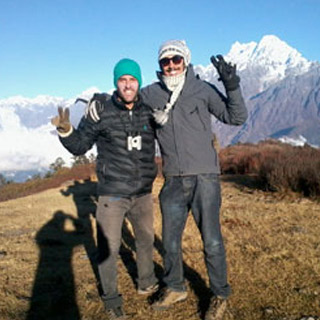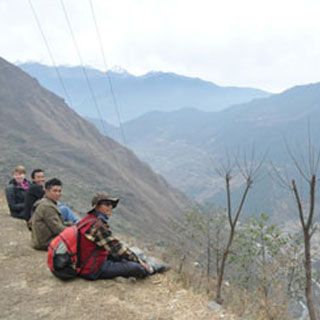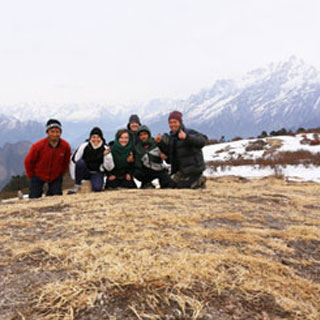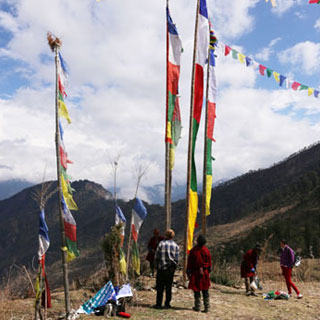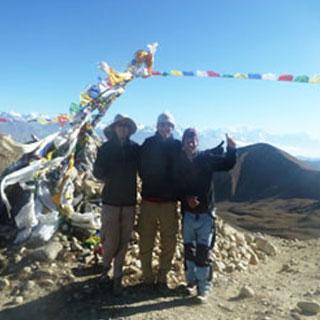Place to Visit
Apart from the mountain areas which are described in length on our website, Nepal has many other attractions. There are many beautiful and interesting places to visit in and outside the Kathmandu Valley. The places are full of history and historical remains and are remarkable for their beauty. Most of the places can be easily reached from Kathmandu by road or air.
Kathmandu;
Kathmandu sits at the heart of the Kathmandu Valley. Listed as a UNESCO World Heritage site since 1979, the entire city is an open-air museum, with hundreds of medieval temples, palaces, shrines and statues dotted around the narrow streets.
Kathmandu has been a beacon for travelers ever since Nepal first opened its borders to foreigners in the 1950s. The first visitors were geographers and mountaineers, who came here to survey and climb the highest mountains on earth, but they were soon joined by hippies in search of the ultimate Shangri-la at the end of the overland trail.
Travelers still come to Kathmandu in search of enlightenment, but these days, the hippies are joined by legions of trekkers, clad in the latest Gore-Tex gear, and well-heeled tour groups, marveling at the medieval temples and palaces of old Kathmandu.
In Kathmandu, internet cafes and swish shops and restaurants stand side by side with centuries-old temples and statue-filled courtyards, particularly in the old town, which stretches from Durbar Square to Thamel, the main hang-out for trekkers and backpackers.
Many of Kathmandu's stunning temples and palaces were built during the Malla dynasty from the 13th to 18th centuries, when Kathmandu competed with the rival city-states of Patan and Bhaktapur to build more and more lavish civic monuments. The three kingdoms were finally united under the Shah dynasty in 1768.
In response to widespread corruption, the Maoist wing of the Communist Party of Nepal declared a people's war against the government and monarchy in 1996. Following the murder of King Birendra and nine other members of the Royal Family by Crown Prince Dipendra in 2001, the new king, Gyanendra, assumed direct control, leading to massive civil unrest. Democracy was restored in 2006 and the Maoists declared a unilateral ceasefire, joining the mainstream political process. Maoist parties gained a massive majority in the 2008 elections, leading to the formal abolition of the monarchy on 29 May 2008.
Kathmandu now looks forward to a new future as the capital of the Federal Democratic Republic of Nepal.
Boudhanath;
The stupa of Bodhanath lies 8 km east of Kathmandu. It is the biggest Stupa in Nepal and is located on flat land and encircled by houses and monasteries, where Rinpoches reside. This colossal Stupa is set on concentric ascending terraces in the powerful pattern of a Mandala. Around the base of this strikingly enormous and simple stupa is a ring of 108 images of the Buddha and 147 insets containing prayer wheels. Slightly damaged by the 2015 Earthquake, the reconstruction of the Stupa is now completely finished.
Patan;
Patan is also known as Lalitpur or the "city of fine arts" and is the oldest city in the valley. This Buddhist City is said to have been founded by Emperor Ashoka in the 3rd century BC. Patan is the cradle of arts and architecture of the valley, a great center both of the Newari Buddhist religion and of traditional arts and crafts with 136 bahals or courtyards and 55 major temples. Well known among these are the Krishna Mandir, Hiranya Varna Mahavihar, Kumbheshwar temple, Jagatnarayan temple and the Mahabouddha temple. Patan is enclosed within 4 Buddhist stupas set on the four-corners of the outer boundaries of this ancient city. Some of the temples of Patan have been damaged and destroyed by the 2015 Earthquake, and some parts are still under reconstruction. Nonetheless, Patan is a beautiful place, worth visiting on any trip to the Kathmandu Valley.
Bhaktapur;
Bhaktapur or Bhadgaon meaning the "city of devotees" lies 14 km east of Kathmandu. It is the home of medieval art and architecture and still retains its rich medieval essence. A city of farmers, Bhaktapur is also known for its pottery and weaving. Bhaktapur has long been known as the most charming and the best preserved of the valley’s three ancient cities. The intricately carved temples, alleyways and timeless atmosphere of this place is simply intriguing. The major sightseeing places in Bhaktapur include Durbar Square, the Golden Gate, Palace of 55 windows, Bell of the barking dogs, Nyatapole Temple, Bhairavanath Temple, Dattatrya Temple, Pujari Math etc. The 2015 Earthquake was very destructive to the city, and around 50 people were killed by the quake. The city will be rebuilding for years to come, but it still remains an essential city to visit while in Nepal. Entrance fees to the city collected from tourists are helping the city rebuild.
Budhanilkantha;
9 km north of Kathmandu in a small pond at the foot of the Shivapuri Hills lies the half-submerged massive black stone statue of the reclining Vishnu resting on a bed of snakes. Worshippers strew the sleeping Vishnu with offerings of flowers and rice. It is a monumental sculpture from the Lichhavi period. The damage from the 2015 Earthquake was minimal here.
Champa Devi;
The hike to the top of Champa Devi (2,278m), the highest peak on the Chandragiri Ridge south west of Kirtipur, affords a panoramic view of the west Kathmandu valley, back dropped by the snow covered Himalayas. Either starting from Chovar or from Pharping the trail climbs steeply to join at a saddle close to the top. A Hindu shrine and a white stupa mark the Champa Devi summit. Several return routes are possible. Staying close to the ridge continuing west, a trail descends from the second saddle north to Kirtipur. Another descends from the third saddle and reaches Kisipidi.
Changunarayan
The road access to Changunarayan, 18 kms east of Kathmandu is from behind Bhaktapur. Alternatively, it is a 45 minutes walk up from the Sankhu road, across the Manohara River, using the old pilgrim’s route or a pleasant half-day hike along the ridge from Nagarkote on the eastern valley rim. The lavishly decorated two-tiered temple was rebuilt after a fire in 1702, but the earliest inscription in the valley dated 467 A.D. testifies to the considerable talents of the Licchavi King Mandeva I, Nepal’s first great historical figure. The temple stands in a spacious courtyard, littered with priceless stone sculptures from the 4th to 9th century A.D. (Licchavi period). This golden age of classical Newari art produced masterpieces that were entirely religious in character.
Dhulikhel;
30 kms east of Kathmandu lies the small resort town of Dhulikhel set on a hill top, enveloped in copper soiled terraces with magnificent views of the central Himalayan peaks. Dhulikhel is well known for its sunrise views and a number of day hikes lead along the north ridge of the town. A good way to get a glimpse of Nepalese village life.
Godavari;
18 kms south of Kathmandu lies the Royal Botanical Gardens at Godavari. With its rushing streams and shady meadows it is a popular picnic spot. It also has a notable collection of orchids, cactii and ferns. A quiet path leads to the Godavari Kunda, a spring where the sacred water of the Godavari river pours from the mountains.
Kakani;
The village of Kakani lies 29 km north west of Kathmandu City. Famous for magnificent views of the sun setting over the north western Himalayan range; the Ganesh Himal massif, Gaurishankar (7,134 m), Choba Bhamare (6,016 m), Himalchuli (7,893 m), Annapurna (8,091 m). The drive to Kakani and back along the Trishuli Road is scenically rewarding with green forest and mountain grandeur on one side and fertile river flats and terraced hillside cultivation on the other.
Kopan Monastery;
A center of Mahayana Buddhism was established in 1969 by two Lamas; Lama Thupten Zopa Rinpoche and Lama Thupten Yeshe. Since its inception the center has been responsible for introducing thousands to Buddha's teaching through meditation courses, lectures and retreats.
Nagarkot;
The tiny settlement of Nagarkot clings to a hilltop 36 km east of Kathmandu at an altitude of 2,099m. It is one of the best vantage points to view the peaks - from the Annapurnas to Everest, the peaks seem no more than a day's walk away. It is also possible to do a day hike from Nagarkot to Dhulikhel along the valley rim. Nagarkot is famous for its fantastic sunrises and sunsets.
Namo Buddha;
Namo Buddha meaning "hail to the Buddha" a sacred site, where according to legend Buddha sacrificed his body to feed a starving tigress and her cubs. A carved stone slab at the main stupa depicts the moving story. A dirt road (suitable for 4 wheel drive vehicles) leads up to Namo Buddha from Dhulikhel. A different trail returns descending south through a forest heading west up a long vale for a round trip walk of six to seven hours, or 2 to 3 hours to Panauti.
Pashupatinath;
It is situated 5 km east of Kathmandu on the banks of the sacred Bagmati River. The temple of lord Shiva, Pashupatinath, with a tiered golden roof and silver doors is famous for its superb architecture. Entrance to the temple precinct is forbidden to non-Hindus. The best view is from the terrace on the wooded hill across the river. The large gilded triple-roofed temple was built in 1696 AD though 300 years earlier there was a structure on this site. The Bagmati River is lined with dharmasalas and cremation ghats including a royal ghat reserved exclusively for members of the royal family. There is usually a cremation in progress on one of the platforms by the river, regarded as holy as it flows into the sacred Ganges. There are many occasions when the faithful take ritual purificatory baths in the river. One of the most colorful is the women's festival of Teej when dressed in their finest red and gold saris hundreds of women, laughing and singing converge on Pashupatinath.
Shivapuri;
Shivapuri, at a height of 2,732m, allows one a 360 degree view of the Himalaya in the north and the Kathmandu valley in the south. The trail up to Shivapuri hill leads through small farming villages and a protected forest of Rhododendrons and orchids with little mountain streams running through it. This can be made into a most enjoyable full day's programme.
Swayambhunath (Monkey Temple);
Atop a green hillock west of Kathmandu stands the great stupa of Swayambhunath, a site over 2,500 years old marking the point where the legendary patriarch Manjushri discovered the lotus of the ancient Valley lake. For centuries an important center of Buddhist learning, the painted eyes of the Buddha gaze out from all four sides of the monument. Constructed to specific rules each with a symbolic meaning, the stupa of Swayambhunath is a model of its kind. Its dazzling white hemispherical mound represents the ladder to nirvana, itself symbolized by the umbrella on the top. The whole is hung with multi-colored prayer flags whose every flutter releases holy prayers. The faithful circumambulate the stupa clockwise, turning the banks of prayer wheels and even prostrating full-length in reverence.
Pokhara & Begnas;
The Pokhara valley is a scenic 6-hour mountainside drive or a 25 minute flight west of Kathmandu. It is famous for its lakes and its location beneath the towering Annapurna massif. It is highly recommendable to visit this scenic valley, stay in small resort hotels with views of the magnificent Himalayan peaks, go boating on the calm waters of the Phewa and the Begnas lakes or go on tours or day hikes in the nearby hills or if time permits, on a well organized trekking holiday.
Further 12 km east of Pokhara at the end of a road that turns north from highway to Kathmandu lies the Begnas Lake offering the perfect nature retreat because of its relative seclusion. Splendid hiking, boating and fishing opportunities can be found here. The Begnas Lake Resort, located on a hillside of unspoiled forestland with guest rooms built on rice terraces close to the lake offers magnificent views over tranquil waters of the Begnas, beautiful ethnic villages on the opposite hillsides and the snowy mountain peaks from every room.
Chitwan National Park (932 sq. kms);
Just a 5 hour drive from Kathmandu or a 4 hour drive from Pokhara or a 20 minutes flight from Kathmandu, Chitwan National Park is proud to be called Asia’s best managed park and is home to over 50 species of mammals, 55 species of amphibians and reptiles and 525 species of birds. Wildlife that thrive here include; the great one-horned Asian Rhinoceros, Gaur, wild Bison, sloth Bear, four different species of Deer, the Rhesus Monkey and the black-faced Langur, the spotted Leopard, Royal Bengal Tiger, the fish-eating Gharial, the flesh-eating marsh Crocodile and the Gangetic Dolphin among many others. The birdlife too is very rich and varied and a delight for Ornithologists. A number of jungle lodges & camps operate inside and on the periphery of the park. They offer activities such as; elephant back safaris through the jungle in search of wildlife, nature walks, jungle drives to spot animals, canoe rides to see crocodiles & water-birds, tribal village visits etc; In the evenings, slide shows on Nepalese flora and fauna and Tharu tribal folk dances are also held.
Lumbini;
Lumbini, the birthplace of lord Gautam Buddha, is the pilgrimage destination of the world’s millions of Buddhists. The main attraction at Lumbini remains the sacred garden spread over 8 sq. kms and possessing all the treasures of this historical area. The Mayadevi temple (if not under reconstruction) is the main attraction for pilgrims and archaeologists alike. This site, identified by the Indian Emperor Ashoka’s commemorative pillar is listed as a world heritage site by UNESCO. To the south of the pillar, we find the sacred pond Puskarni, where Queen Mayadevi had her bath just before giving birth to the Buddha. Other attractions include the various monasteries and stupas erected by different Buddhist countries.
Namche Bazaar;
The name of Namche Bazaar is generally associated with that of Sagarmatha or Mt. Everest. It is the entrance to the Everest region and is 241 kms from Kathmandu and located at an altitude 3,440m. Trekkers cover this distance in 9 days from Jiri town. As the largest settlement in the Everest region Namche Bazaar now boasts of its own electricity generated from the Dudhkoshi river. One can also reach Namche Bazaar by flight to Lukla and then a 2 days trek through Phakding.
Himalayan region:
The word "Himalaya" is Sanskrit for "abode of snow". This region has an altitude ranging between 4,877 m to 8,848m. It includes eight of the 14 highest summits in the world that exceed an altitude of 8000 m, including the highest of them all, Mt. Everest (8,848 m). Only 8% of Nepal's population lives in this region.
The region's culture and religion are closely linked to Tibet, and the traditional economy was (and sometimes still is) based on trans-border trade with its northern neighbour.
One can enjoy the magnificent Himalayas of this region in three different ways: take a mountain flight and enjoy the splendid view of snow capped Himalayas from the safety of the pressurized airplane cabins, or gaze at the panorama from popular mountain viewpoints such as Nagarkot and Dhulikhel around the Kathmandu Valley and Sarangkot in Pokhara or take the direct approach and trek to the mountain base from where you can actually touch them and feel the Himalayas.
Indeed, the best way to experience Nepal's unbeatable combination of natural beauty and culture riches is to trek through them. One should know that trekking means walking and is a process rather than a destination. As one gets into shape, it's easy to fall into walking-machine mode. Though trekking demands a physical challenge, a trekker should remind himself/ herself to stop at teashops, admire the views, splash in a stream and play with local kids. Walking and nothing, but day after day, provides illuminating insights of Nepal's diversity in terms of geography, people, religion and culture. The main precaution to be taken while trekking is not to go up too high too fast. The body should be given plenty of time to acclimatize. Acute Mountain Sickness (AMS) refers to the effects of the thin air at high altitudes which can be very dangerous and may even result in death. If you get initial symptoms like nausea, dizziness, swelling of the face and breathlessness, descend to the lower elevation immediately and seek medical help. Check out Travel FAQ for more details on trekking in Nepal.
Trekking is possible at any time of the year depending on where one is going. The most popular seasons are spring (February - May) and autumn (September-November). Winter is very cold above 4,000m and high mountain passes may be snowbound but it is good for trekking at lower altitudes. During the monsoon season (June-August) you can trek in rain-shadow areas of the northern areas of regions like Mustang, Upper Manang and Dolpo. These places are out of reach of the rain clouds because they lie beyond the high mountains which block off the monsoon clouds
Nepal is a safe and welcoming country to visit, and tourism supports both the local economy and rebuilding efforts around the country.
Traveler’s Says
We did the Langtang Valley Trek with Nyima Chhomo (the daughter of Durga Tamang) and were really happy with everything. We enjoyed having a female guide which is really uncommon in trekking in Nepal. The trek was stunning and well organized.… [More]
Hannah Kraft and Solveig Leas, GermanyDear Durga, The three of us are very well and have enjoyed this week a lot! I really liked how authentic it was. We shared some nice moments with the home owners, like seeing a freshly slaughtered hen getting prepared for… [More]
Guillaume Billardon, SwazilandMy husband & I booked a private trek
combining the Tamang Heritage & Langtang trails. Our guide, Nyima Chhomo, and porter, Dobar, were wonderful hosts throughout our 13 day adventure. Their local knowledge was evident and we were glad to have… [More]
Andrea ODonnell & Tim ODonnell, United StatesExcellent experience - Tamang Heritage Trek We took the Tamang Heritage trek September 2024 and it was a wonderful experience. The trip was organized as promised and the guide, Pasang, was exceptional. Pasang is from the local villages so knew many… [More]
Shareen Leland and Marian, United StatesBonjour Durga Tamang, Tout s’est bien passé à Katmandou, nous avons pu prendre le temps de visiter la ville tranquillement. Nous sommes rentrés un peu fatigués du trek mais nous sommes contents, c’était vraiment une bonne expérience et nous sommes ravis… [More]
Hélène Theodori et sa famille, Trekking, FranceDear Durga-- I hope this note finds you and your lovely family well. Happy New Year! Thank you very much for your good wishes a few weeks back. We all had covid in my family, and we are only just getting… [More]
Jennifer, AustraliaHello, Durga my friend. The trek was an amazing experience and despite having to shorten the trip we both are grateful for the experience. Both Krisna and Nyima were a big part of the reason that we had a great experience.… [More]
David William Merrifield, United StatesNamaste Tamang, I think Pasang is a really good guide, just a must take more attention for the most powerless person in a group. The guide has the responsibility for the tourist, and must be so slow during Trekking like the last… [More]
Ayu Mielke, GermanyOrginally I wanted to do some trekking but having only 14 days, I wanted to see Temples and World Heritage locations too, like where Buddha was born, so with Durga's help decided to do the 10 day "Exploring Hertiage side" and… [More]
Gary Michael Clark, United StatesCannot recommend enough! Durga is extremely friendly and went above and beyond to make our trip welcoming and smooth (not just on the trek- before and after as well)
Samdu (our guide) was extremely friendly and helpful, couldn't have done… [More]
The best thing you'll ever do! The trek was unbelievable, Durga was extremely welcoming, friendly and helpful. Making the whole thing so smooth. Samdu our guide was perfect, couldn't have been more helpful. Hassan our porter was amazing, I don't know… [More]
MR DANIEL HORROCKS, United KingdomGreat experience at Langtang Valley. Durga the owner took care of meeting all my requests and tailor-made the experience according to my needs. My guide was enthusiastic and nice. Highly recommended.
[More] Esteban Camargo, ColombiaTamang Heritage Trail, Langtang Valley Trek
Nach der Empfehlung im Stefan Loose Reiseführer hatten wir uns bereits zuhause bei der Vorbereitung unserer Reise mit Durga Tamang in Verbindung gesetzt. Das persönliche Gespräch in Kathmandu hat uns dann voll bestätigt, mit Himalayan… [More]
Heinz und Elisabeth, GermanyIt was my first visit to Nepal and I was anxious about my ability to manage the trek. I am 58 and keep active and fit but I am not used to the heights of the Himalayas. Thanks to Durga's care… [More]
Katherine Westfold, AustraliaChoosing Himalayan Unforgettable Adventure and Durga Tamang as our (local!) travel company and trekking guide was definitly the best decision for our Nepal trip. Not only that the trekking was organized in a thoughtful way! Durga showed us through spectacular landscapes… [More]
Leonhard Jungwirth, AustriaI came to Kathmandu with the idea in mind to do some trekking, but without having anything planned. When I first arrived there I got in touch with some agencies in Thamel but I didn't trust them much because they seemed… [More]
Allen, ItalyChoosing to have Durga guide my trekking partner and I was one of the best decisions Ive ever made. We trekked Langtang valley at the end of monsoon season and truly experienced the culture of the Nepali and Tibetan. Plus, you… [More]
Noah Willison, United States"Langtang valley Trek"
Mar 28th 2016 Namaste: We really enjoyed out trip to Langtang with you Durga Tamang. Everything was planned perfectly and we were thrilled to get the whole family onto the top of Kyanjin Ri. Langtang is safe now.
… [More]
"Tamang Heritage Trek"
May 17 2016 Namaste: Overall our experience in Nepal with you was really amazing, the days we spend in the Tamang Valley, walking around that beautiful views of mountain peaks, forests and little villages were the best part of… [More]
Oriol Fonos, SpainDonna and I had a great experience on our trek of the Annapurna circuit. The scenery, the trail, mountain villages, and the Nepalese people were exceptional as we expected.
Himalayan Unforgettable Adventure provided the transportation, guide, porters, meals and accommodation for… [More]
Bill and Donna Bauer, CanadaWhen we began planning our trip to Nepal in 2015 we began to quickly realise just how many decisions we were going to need to take to put together our itinerary, not least being the extensive options available to you when… [More]
Simon and Caroline, British Indian Ocean TerritoryIn October 2015, my husband and I went trekking in Nepal with our friends Bill and Donna. We were a private group and originally our plan was to hike the Langtang valley. We decided to book our trek through Durga Tamang who runs Himalayan… [More]
Anne and Harry Range, CanadaI just finished the Langtang Valley trek with Durga Tamang as my guide and Nima Lama as my smiling hard-working porter. Unfortunately, the weather was uncooperative – constant clouds, drizzle, mist – making mountain views elusive. (But even with that, I… [More]
Mike, United StatesDear Durga ,I want to say thank you so much for the outstanding trip up to the top of kala pather! We had sucha great time with you and Ram. You are an excellent guide and a wonderful person. We felt… [More]
Joe Michael and Kim, ItalyLe treck etait super! Nous sommes passes de village en village, les paysages sont magnifiques. Nous avons vu les differents métiers, des tisseuses, des bergers, des gens dans les cultures, le travail se fait a l’ancienne, c’ est tres interessant. Le… [More]
Jeanne, Jenny and Sarah, LuxembourgFebruary 10 2014 Namaste: We have very much appreciated an approach combining volunteering for RTEES during one week in the small Tamang village of Gatlang, and a 10 days trek in the Langtang valley, organized by Himalayan Unforgettable Adventure.
This… [More]
Isabelle and Alexis, FranceNamaste. We wanted to organise our trek before we arrived in Kathmandu, and after some extensive research came across Durga Tamang and his organisation (that are doing wonderful things for the villages of the Tamang Heritage Trail). Durga was very responsive… [More]
Nelly and Nathan, AustraliaNamaste. We wanted to organise our trek before we arrived in Kathmandu, and after some extensive research came across Durga Tamang and his organisation (that are doing wonderful things for the villages of the Tamang Heritage Trail). Durga was very responsive… [More]
Nelly and Nathan, AustraliaNamaste. We wanted to organise our trek before we arrived in Kathmandu, and after some extensive research came across Durga Tamang and his organisation (that are doing wonderful things for the villages of the Tamang Heritage Trail). Durga was very responsive… [More]
Nelly and Nathan, AustraliaWe contact Durga to make the Heritage Trail and Langtang Trail (1 march to 13 march 2014) and he offer us to go before starting the trek two days at his village, Gatlang, to see the LOSAR FESTIVAL (feb- march Buddhist… [More]
Margarida and Jorge, SpainThis was undoubtedly a unique, an unforgettable experience that I waited for years to fulfill. Thank you so much for turning it real and for showing me the simplicity and greatness of the Himalayan Tamangs and their own kingdom.
Making your… [More]
Miguel Buto, Portugal6 January 2014 Namaste. We wanted to organise our trek before we arrived in Kathmandu, and after some extensive research came across Durga Tamang and his organisation (that are doing wonderful things for the villages of the Tamang Heritage Trail). Durga… [More]
Nelly and Nathan, AustraliaThe highlight of our trip to Nepal was our amazing two week trek along the Tamang Heritage and Langtang trails. The scenery and moutain views in this area are absoutely gorgeous, something we will remember for years to come. The trip… [More]
Margit McLaughlin, United StatesWe contact Durga to make the Heritage Trail and Langtang Trail (1 march to 13 march 2014) and he offer us to go before starting the trek two days at his village, Gatlang, to see the LOSAR FESTIVAL (feb- march Buddhist… [More]
MARGARITA AND JORGE, SpainFebruary 10 2014 Namaste: We have very much appreciated an approach combining volunteering for RTEES during one week in the small Tamang village of Gatlang, and a 10 days trek in the Langtang valley, organized by Himalayan Unforgettable Adventure.
This approach… [More]
Isabelle and Alexis, FranceNamaste: We did the Heritage Trail and Langtang Valley Trail with Durga and his team and was a wondurful experience. That mountains are so beautiful and the village people are very friendly and kind. I really recommend do that trails with… [More]
Margarida and Jorge, FranceDate: 22 Oct 2013 Our Upper Mustang trek was an amazing experience both in terms of the unusual physical beauty and the ever-present stream of spirituality, especially in the extraordinary medieval city of Lo Manthang. Durga Tamang, our trekking guide, made… [More]
Mylo Schaaf and Dan Lowenstein, United StatesDurga is a really nice men. when we first met him we already had some bad experiences with tour guides in Kathmandu who tried to sell very hard there trekking trips. but durga wasn't like those man. he made directly a… [More]
Antilia and Luc, FranceTravelling alone, and with the idea of going trekking, I started to inform myself, which trail I should choose. I read about different treks and choose the Heritage Trail, because it is a relatively new trek, easy to walk and everyone… [More]
Michael, United StatesDurga is a really nice men. when we first met him we already had some bad experiences with tour guides in Kathmandu who tried to sell very hard there trekking trips. but durga wasn't like those man. he made directly a… [More]
Alex , Jana and Adrian, Germany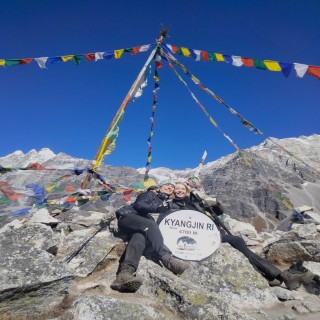
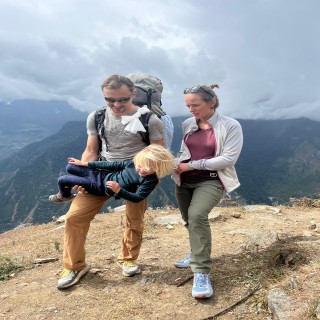
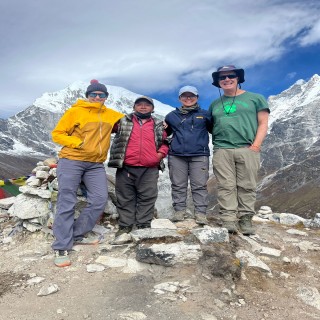
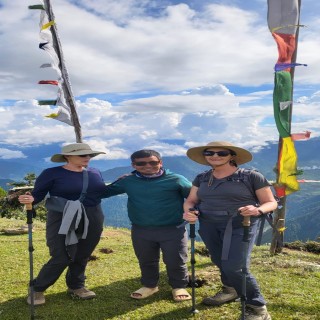
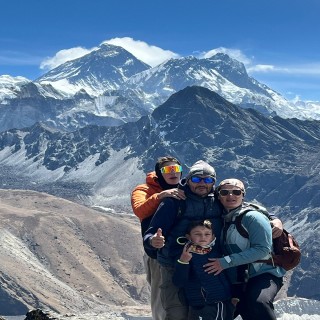
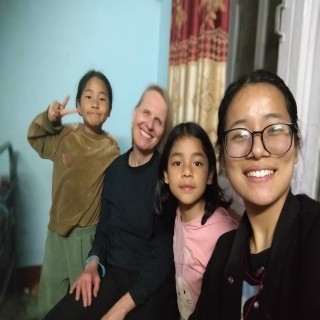
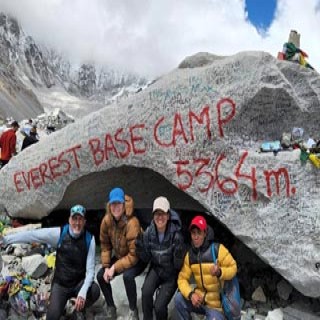
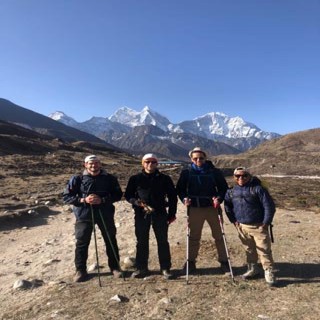
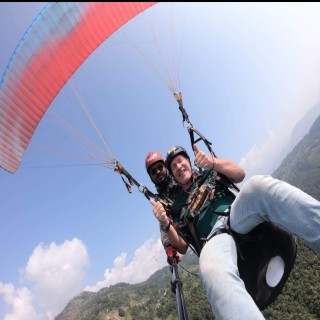
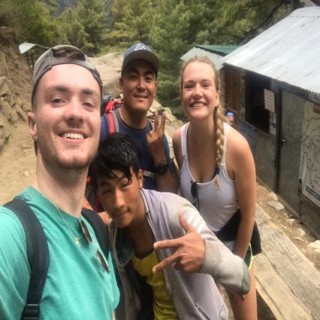

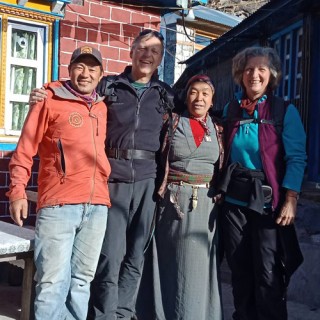
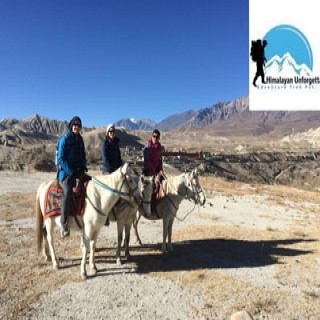

.jpg)
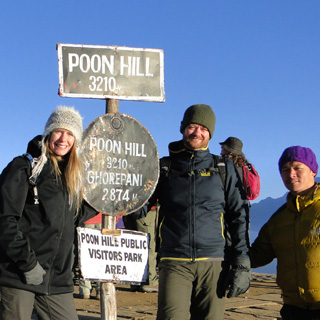
.jpg)


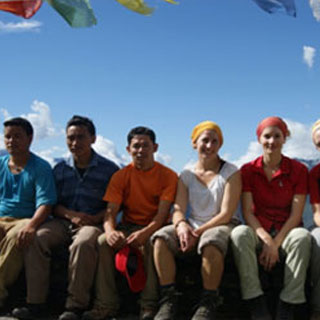
.jpg)

